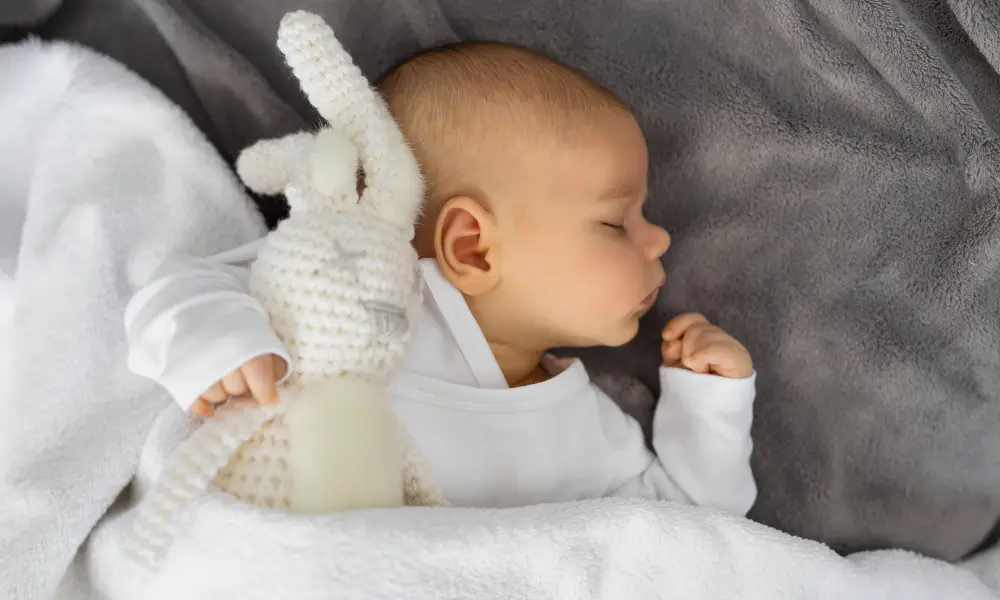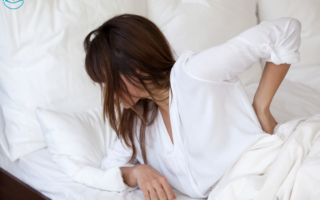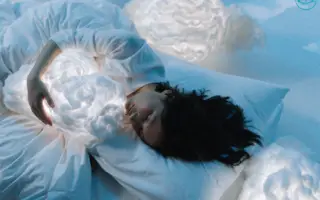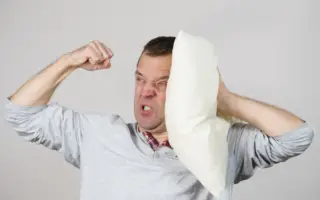Babies can sleep with stuffed animals after their first birthday. Before that, soft toys pose a suffocation risk.
Creating a safe sleep environment is crucial for your baby’s well-being. Pediatricians recommend keeping the crib free from loose bedding, pillows, and stuffed animals until your child turns one. After their first birthday, a small, safe stuffed animal can provide comfort.
Ensure the toy is free from small parts that could be choking hazards. Opt for one that is easy to clean and hypoallergenic. Introducing a stuffed animal can help your baby feel secure and foster a cozy sleep routine. Always prioritize safety and monitor how your baby interacts with their new bedtime companion. Making informed choices will help ensure both safety and comfort for your little one.
Safe Sleep Guidelines For Babies
Introducing stuffed animals to your baby’s sleep routine can be a delightful milestone. However, ensuring your baby’s safety during sleep is paramount. This section provides essential tips on Safe Sleep Guidelines for Babies, focusing on creating a safe sleep environment and the importance of adhering to these guidelines.
Creating A Safe Sleep Environment
Creating a safe sleep environment is crucial for your baby’s health and safety. Here are some key tips to ensure your baby sleeps soundly and securely:
- Firm Mattress: Ensure your baby sleeps on a firm mattress with a fitted sheet. Soft bedding can increase the risk of suffocation.
- Back to Sleep: Always place your baby on their back to sleep. This reduces the risk of Sudden Infant Death Syndrome (SIDS).
- Crib Safety: Use a crib that meets current safety standards. Avoid using cribs with drop-side rails or broken parts.
- Room Temperature: Keep the room at a comfortable temperature. Overheating can be dangerous for babies.
It’s also important to avoid placing soft objects, toys, or loose bedding in your baby’s crib. These items can pose a suffocation hazard. Here’s a table summarizing safe and unsafe items for a baby’s crib:
| Safe Items | Unsafe Items |
|---|---|
| Firm Mattress | Soft Bedding |
| Fitted Sheet | Pillows |
| Sleep Sack | Blankets |
| Pacifier | Stuffed Animals |
Importance Of Following Safe Sleep Guidelines
Following safe sleep guidelines is essential to protect your baby from sleep-related risks. Here are some reasons why these guidelines are so important:
- Reducing SIDS Risk: Placing your baby on their back to sleep significantly reduces the risk of SIDS.
- Preventing Suffocation: Keeping soft objects out of the crib prevents the risk of suffocation and entrapment.
- Promoting Healthy Sleep Habits: Establishing a safe sleep routine helps your baby develop healthy sleep habits.
- Peace of Mind: Adhering to these guidelines gives parents peace of mind, knowing their baby is sleeping safely.
It’s also important to educate everyone who cares for your baby about these guidelines. Grandparents, babysitters, and other caregivers should understand and follow safe sleep practices. Consistency is key to ensuring your baby’s safety.
Here are some steps to take:
- Share safe sleep guidelines with caregivers.
- Provide a safe sleep space in all environments.
- Regularly check for updates on safe sleep practices from trusted sources.
By following these guidelines, you can create a safe and cozy sleep environment for your baby, ensuring they get the rest they need while staying safe.
Recommended reading: Best Mattress For Kids Review.
When Can Babies Sleep With Stuffed Animals?
When Can Babies Sleep With Stuffed Animals? Tips for Safe And Cozy Sleep: As parents, ensuring our babies sleep safely and comfortably is a top priority. Many wonder when it’s safe to introduce stuffed animals into their baby’s sleep environment. This guide provides crucial information on the ideal time and safety tips for letting your baby snuggle with their favorite plush toy.
Risk Of Suffocation
Introducing stuffed animals too early can pose a significant risk of suffocation. Babies under a certain age lack the strength and coordination to move objects away from their faces. This inability can lead to accidental smothering. Here are some key points to consider:
- Soft objects like stuffed animals and pillows can block airways.
- Babies might roll onto a stuffed animal, increasing the risk of suffocation.
- Loose parts, like buttons or beads, can be choking hazards.
According to the American Academy of Pediatrics (AAP), it is crucial to keep the crib free from any soft objects for infants under 12 months. They recommend a bare crib with only a fitted sheet to ensure the baby’s safety.
| Age | Risk Level |
|---|---|
| 0-6 months | High |
| 6-12 months | Moderate |
| 12+ months | Low |
Always prioritize safety by following these guidelines and ensuring that your baby’s sleeping environment is free of potential hazards.
Recommended Age For Introducing Stuffed Animals
The recommended age for introducing stuffed animals is generally after the baby turns one year old. At this age, the risk of suffocation decreases significantly. Here are some reasons why:
- Improved Mobility: Babies over 12 months can push objects away from their faces.
- Stronger Neck Muscles: This strength helps them turn their heads more effectively.
- Better Coordination: They can handle and manipulate objects with more control.
Even after one year, it’s essential to choose the right type of stuffed animal:
- Avoid small parts: Ensure the toy has no detachable parts like eyes or buttons.
- Opt for washable toys: Babies tend to drool and chew on their toys.
- Check size: The toy should be small enough to hug but not large enough to pose a risk.
Following these tips helps create a safe and cozy sleep environment for your little one. Remember, safety comes first, so always monitor your baby and their sleeping area.
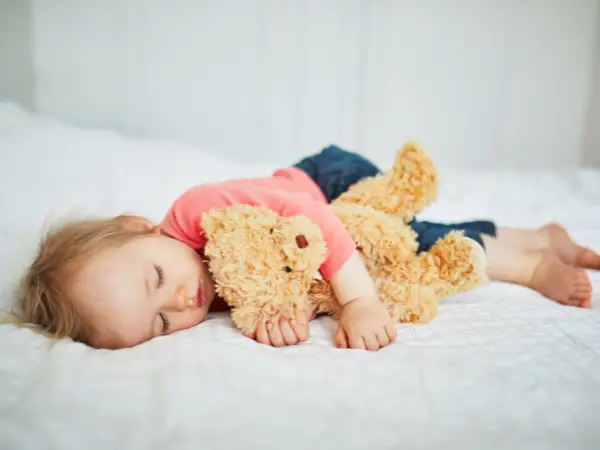
Signs Of Readiness For Sleeping With Stuffed Animals
Introducing stuffed animals to a baby’s sleep routine can be a comforting and joyful milestone. Parents often wonder when it’s safe for their little ones to snuggle up with a plush companion. Recognizing the signs of readiness for sleeping with stuffed animals ensures a safe and cozy experience for your baby. Here are some key indicators to look out for.
Ability To Move Objects
One of the most crucial signs of readiness is your baby’s ability to move objects independently. This skill usually develops around 12 months of age. Babies need to demonstrate control over their movements to prevent any risk of suffocation.
- Grasping and releasing: Your baby should be able to grasp and release objects voluntarily.
- Rolling over: Ensure your baby can roll over both ways (from tummy to back and back to tummy).
- Sitting up: Babies should be able to sit up without assistance.
Here’s a quick reference table:
| Age Range | Motor Skills Development |
|---|---|
| 6-9 Months | Grasping, releasing, rolling one way |
| 9-12 Months | Rolling both ways, sitting up, moving objects |
Once your baby shows these skills, introducing a small, safe stuffed animal can be considered. Choose ones with no small parts to avoid choking hazards.
Comfort With Separation
Another important sign is your baby’s comfort with separation. Babies often form attachments to objects that provide them with a sense of security. This can be an indicator that they are ready to sleep with a stuffed animal.
- Separation anxiety: Your baby should show reduced signs of anxiety when separated from you.
- Comfort objects: Notice if your baby seeks out specific objects for comfort during times of stress.
- Self-soothing: Babies who can self-soothe are often ready for a stuffed animal in their sleep environment.
Here’s a checklist to help:
- Does your baby reach for comfort objects during nap times?
- Can your baby sleep without your immediate presence?
- Does your baby show reduced anxiety when separated from you?
When babies are able to soothe themselves and show comfort with separation, a stuffed animal can become a comforting sleep companion.
Sleeping In A Crib Or Toddler Bed
Ensuring your baby sleeps in a crib or toddler bed is another key sign of readiness. This transition usually happens between 12 to 18 months. A safe sleep environment is crucial for introducing stuffed animals.
Consider the following:
- Crib safety: Ensure the crib meets all safety standards and is free of loose bedding and pillows.
- Toddler bed: When transitioning to a toddler bed, make sure it has guardrails to prevent falls.
- Safe placement: Place the stuffed animal in a corner away from your baby’s face.
Here’s a safety guide:
| Transition Stage | Safety Measures |
|---|---|
| Crib | Remove loose bedding, use fitted sheets |
| Toddler Bed | Install guardrails, ensure bed stability |
Introducing a stuffed animal in a safe sleep environment ensures your baby remains secure and comfortable throughout the night.
Tips For Safe Sleep With Stuffed Animals
Babies love the comfort of stuffed animals, but ensuring their safety during sleep is crucial. Knowing when and how to introduce a stuffed animal to your baby’s sleep environment can help create a cozy and secure space. Here are some tips for safe sleep with stuffed animals.
Choosing The Right Stuffed Animal
Picking the perfect stuffed animal for your baby is essential for safety and comfort. Here are some tips to help you make the best choice:
- Size matters: Choose a small to medium-sized stuffed animal to avoid any risk of suffocation.
- Material: Opt for hypoallergenic materials to prevent any allergic reactions.
- Stitching: Ensure the stuffed animal has strong stitching to avoid any loose parts that could be a choking hazard.
- Washable: Select a machine-washable stuffed animal for easy cleaning.
Here is a quick comparison table for easy reference:
| Feature | Recommendation |
|---|---|
| Size | Small to Medium |
| Material | Hypoallergenic |
| Stitching | Strong |
| Washable | Machine-Washable |
Keeping The Stuffed Animal Clean
Maintaining cleanliness is vital for your baby’s health. Here are some tips to keep stuffed animals clean:
- Regular washing: Wash the stuffed animal once a week to keep it free from dust and germs.
- Use gentle detergent: Choose a baby-safe detergent to avoid skin irritations.
- Dry thoroughly: Ensure the stuffed animal is completely dry before giving it back to your baby.
- Spot clean: For minor stains, use a damp cloth and gentle soap.
Here is a step-by-step guide for washing stuffed animals:
- Place the stuffed animal in a mesh laundry bag.
- Use a gentle cycle and cold water in the washing machine.
- Add baby-safe detergent.
- Air dry or use a low-heat setting in the dryer.
Positioning The Stuffed Animal Safely
Proper positioning of the stuffed animal ensures your baby’s safety during sleep. Follow these guidelines:
- Avoid the face: Place the stuffed animal away from your baby’s face to prevent suffocation.
- Secure placement: Ensure the stuffed animal is placed where it cannot fall onto your baby.
- No clutter: Keep the crib free from other items that could pose a risk.
- Monitor: Regularly check the sleep environment to ensure safety.
Here is an illustration of safe positioning:
Correct Position:
- At the foot of the crib
- Beside the baby but not near the face
Incorrect Position:
- Directly on top of the baby
- Near the baby’s face
Following these tips helps create a safe and cozy sleep environment for your baby, allowing both you and your little one to rest easy.
Alternatives To Stuffed Animals
When babies start to sleep with stuffed animals, their sleep environment becomes more cozy and comforting. However, safety is a big concern for parents. Alternatives to stuffed animals can offer the same comfort without the risks. These alternatives are designed to provide a safe and snug sleep for your baby.
Loveys Or Security Blankets
Loveys or security blankets are excellent alternatives to stuffed animals. They offer comfort and are generally safer. A lovey is a small, soft blanket, often with a stuffed animal head attached. These items are designed to soothe babies without the choking hazards associated with loose parts.
Here are some benefits of using loveys or security blankets:
- Easy to grasp: Babies can hold onto them without difficulty.
- Soft and cuddly: Made from materials that are gentle on a baby’s skin.
- Washable: Most loveys and security blankets can be machine-washed, ensuring cleanliness.
Parents should follow these tips for using loveys or security blankets:
- Choose breathable fabrics: Look for materials like cotton or muslin.
- Inspect regularly: Check for wear and tear to avoid loose threads.
- Limit to one: Avoid cluttering the crib with multiple items.
Age-appropriate use is crucial. Experts recommend introducing loveys around the 12-month mark. This timing reduces the risk of suffocation and aligns with developmental milestones.
Soft Toys With No Loose Parts
Soft toys with no loose parts are another safe alternative. These toys are designed to minimize risks while providing comfort. They are crafted without small buttons, beads, or plastic eyes that could detach and pose a choking hazard.
Here are characteristics of safe soft toys:
| Feature | Benefit |
|---|---|
| Seamless design | Reduces the risk of parts breaking off. |
| Soft materials | Gentle and soothing to touch. |
| Hypoallergenic | Less likely to cause allergic reactions. |
When selecting soft toys with no loose parts, consider these tips:
- Choose age-appropriate toys: Ensure they are suitable for your baby’s age.
- Regularly inspect: Check for any damage or wear.
- Wash frequently: Keep the toys clean to maintain hygiene.
Introducing soft toys with no loose parts can start as early as six months. Always supervise your baby when they are in the crib with any toy to ensure safety.
Transitioning To Sleeping With Stuffed Animals
Introducing a stuffed animal to your baby’s sleep routine can be a comforting milestone. Many parents wonder about the right time and method for this transition. Ensuring safety while providing a cozy sleep environment is key. Follow these tips for a smooth and safe transition to sleeping with stuffed animals.
Gradual Introduction
Start by introducing the stuffed animal during playtime. This helps your baby get familiar with it in a safe and supervised setting. Choose a stuffed animal that is soft, without any small parts that could pose a choking hazard.
- Begin with supervised naps: Let your baby nap with the stuffed animal while you monitor closely. This can help them feel secure.
- Consistency is key: Use the same stuffed animal each time to build a sense of familiarity and comfort.
- Introduce during bedtime stories: Include the stuffed animal in the bedtime routine by using it during storytime or cuddle sessions.
Gradually, you can allow the stuffed animal to stay in the crib during nighttime sleep. Ensure the crib is free of any other potential hazards. The following table summarizes the steps for a gradual introduction:
| Step | Action |
|---|---|
| Step 1 | Introduce during playtime |
| Step 2 | Supervised naps |
| Step 3 | Include in bedtime routine |
| Step 4 | Allow during nighttime sleep |
Monitoring Your Baby’s Sleep
It’s essential to monitor your baby’s sleep when they start using a stuffed animal. Keep an eye on their sleep patterns and any changes in behavior. Watch for signs of discomfort or allergies that could arise from the stuffed animal.
- Use a baby monitor: A video monitor can help you keep a close watch on your baby without disturbing their sleep.
- Check the crib regularly: Ensure that the stuffed animal is positioned safely and that the crib remains free of any other items.
- Observe sleep quality: Note if your baby sleeps better or worse with the stuffed animal. Adjust as necessary.
If you notice any signs of distress or discomfort, remove the stuffed animal and try again later. Patience and vigilance are crucial during this transition period. Below is a quick checklist to help you monitor your baby’s sleep:
| Task | Frequency |
|---|---|
| Use baby monitor | Every night |
| Check crib | Before and after sleep |
| Observe sleep quality | Daily |
Frequently Asked Questions
At What Age Is It Safe For A Baby To Sleep With A Stuffed Animal?
Babies can safely sleep with a stuffed animal at 12 months old. Ensure the toy is small and free of choking hazards. Always prioritize safety in the crib.
When Can Babies Sleep With A Comfort Toy?
Babies can sleep with a comfort toy after 12 months. Ensure the toy is safe, small, and without any choking hazards. Always consult your pediatrician for personalized advice.
When Can A Baby Sleep With A Lovey?
Babies can sleep with a lovey once they turn 12 months old. Ensure the lovey is safe and free from choking hazards. Always consult your pediatrician for personalized advice.
Are Warmies Safe For Babies To Sleep With?
Warmies are generally safe for babies, but supervision is recommended. Avoid placing them directly in the crib while sleeping.
Conclusion
Ensuring your baby sleeps safely with stuffed animals is crucial. Follow the recommended age guidelines and safety tips. Choose age-appropriate, safe, and hypoallergenic toys. This provides comfort while minimizing risks. Creating a safe sleep environment fosters better rest for both baby and parents.
Prioritize your baby’s safety for a peaceful night.
